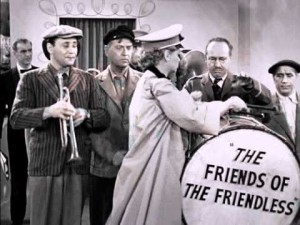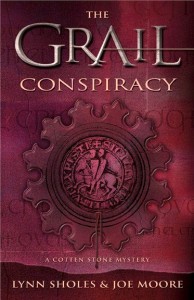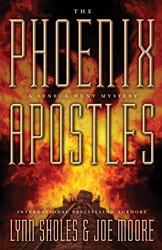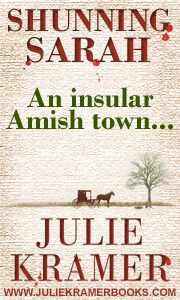Note from Kris: I am in France this week so am handing over the reins to my co-author and sister. Take it away, Kelly!

Note from Kris: I am in France this week so am handing over the reins to my co-author and sister. Take it away, Kelly!
By Joe Moore
While reading the news recently, a story caught my attention: At least 25 dead in Hong Kong ferry collision. Apparently, two vessels collided, killing 25. More than a dozen others were missing. It’s being called one of Hong Kong’s worst maritime accidents.
 Almost every day we read or hear about tragedies in the news: earthquakes, floods, tsunamis, fires, mass killings. As human beings, even the most distant, obscure news of fellow humans losing their lives or encountering other tragedies usually draws some emotion, even if it’s fleeting. But unless we’re directly connected with the people in those news stories, our emotional reaction and interest is often shallow at best. The reason is that we know virtually nothing about them. They are just numbers and statistics. If we take the time to read the article, we may see some additional details that make the people involved a little more real. There may be a human interest angle that grabs our attention for a moment or two before we turn the newspaper page or click on the next link. But basically, we don’t care deeply because we have no emotional connection with them.
Almost every day we read or hear about tragedies in the news: earthquakes, floods, tsunamis, fires, mass killings. As human beings, even the most distant, obscure news of fellow humans losing their lives or encountering other tragedies usually draws some emotion, even if it’s fleeting. But unless we’re directly connected with the people in those news stories, our emotional reaction and interest is often shallow at best. The reason is that we know virtually nothing about them. They are just numbers and statistics. If we take the time to read the article, we may see some additional details that make the people involved a little more real. There may be a human interest angle that grabs our attention for a moment or two before we turn the newspaper page or click on the next link. But basically, we don’t care deeply because we have no emotional connection with them.
As writers, when it comes to our readers, if they have little or no emotional connection with the characters in our books, they won’t care what happens to them. And if they don’t care, we’re in trouble.
An emotional connection is created when a reader formulates conclusions about our characters’ personalities based on what we show the characters doing and saying. It’s not good enough for the narrator to “tell” the reader what a brave and generous guy our protagonist is or that our antagonist is a heinous villain. We have to show the reader through the characters’ actions, dialogue, interior thoughts and reasoning, and the way they treat others and their life choices from one situation to the next. Then a connection can start to form.
A solid approach to establishing each of these is to ask: what would you do? How would you react to a situation that you’ve created in your story? It doesn’t matter whether you’re assuming the persona of the protagonist, antagonist, secondary character or a mere walk-on. You are a human and so are they. They should act and react like humans, think like humans, and reason like humans. Only when they do will the reader form the critical bond or connection. Otherwise, all you have is two-dimensional paper-doll cutouts lacking depth and dimension.
Some helpful techniques include using universal experiences. Who has not told a lie to avoid hurting someone’s feelings? Who hasn’t been faced with deciding between what’s right and what’s easy? Who hasn’t felt animosity or even hate for someone who has wronged you? When your character is in a similar situation, examine how you would react?
If you want your reader to like your character, analyze what it is that makes you like or love someone in real life. Use those emotional traits to build your character. And the opposite is also true. To create a character you want the reader to hate or despise, look for someone you dislike and figure out why. Are they egotistical, self-centered, mettlesome, cold, cruel, or mean? Utilize those universal feelings to build a strong antagonist. But never lose sight of the fact that you’re dealing with humans. Even Hannibal Lecter and Darth Vader had strong human characteristics, good and bad.
One universal element that we all can relate to is pain—both physical and mental. Don’t be afraid to dish out the pain when it comes to developing your characters. It’s okay to put pain in their path because it gives them an opportunity to overcome something and by doing so become stronger or wiser or both. Pain, like any other obstacle, is an opportunity for character growth.
The more human you can make your characters, the better chance you’ll have of your readers forming a connection with them. Always consider how you would react, then have your characters act in a similar, logical manner. And throw in a shot of pain once in a while to keep things interesting.
What about you? Think of your most memorable characters, as a writer and/or reader. What made the two of you connect?

By Joe Moore
 First, some shameless promotion. This Friday, August 24, Amazon will feature two of my thrillers (co-written with Lynn Sholes) on their Kindle Daily Deal. For one day only, you can download THE GRAIL CONSPIRACY or THE PHOENIX APOSTLES for
First, some shameless promotion. This Friday, August 24, Amazon will feature two of my thrillers (co-written with Lynn Sholes) on their Kindle Daily Deal. For one day only, you can download THE GRAIL CONSPIRACY or THE PHOENIX APOSTLES for  only $1.99 each. Both ebooks were featured on the Daily Deal in 2011 and made it to #1 on the bestselling Kindle book list. If you didn’t take advantage of the reduced price before, be sure to do so on Friday. Enjoy!
only $1.99 each. Both ebooks were featured on the Daily Deal in 2011 and made it to #1 on the bestselling Kindle book list. If you didn’t take advantage of the reduced price before, be sure to do so on Friday. Enjoy!
_________________
I recently read THE LOST ONES by Ace Atkins, a terrific story about a local county sheriff dealing with gun runners in North Mississippi. In addition to being an excellent storyteller, Atkins has an enviable talent for creating a strong sense of place—a vivid setting. By the time I finished the novel, I felt like I was so familiar with the back roads of Tibbehah County that I probably should be paying property taxes. And it gave me a big hankering for fried catfish, buttermilk cornbread and grits at the local diner.
So today I want to build on Joe Hartlaub’s Saturday post on Location and offer a few tips on creating a strong setting in your book.
Setting is integral to any story. As a writer, you’ve developed a unique plot and a strong set of characters. Now you must consider the setting. You can’t split the plot and characters from the setting and expect to produce a believable piece of prose in which your readers can relate. Why? Because like real life, your characters don’t live in a vacuum. Just like all of us, your characters are constantly affected by and reacting to their surroundings. For instance, how would your night scene be different if it took place in broad daylight? Rather than the scene being hot and dry, what if it was pouring rain? Would the weather and other natural elements change the dramatic impact of a scene? How would the setting make a scene spooky or funny or dangerous or calming?
Think of some classic scenes in your favorite books or movies and imagine them in different settings. Would they be as strong? Would Indiana Jones being chased down the streets of New York City by a big truck be as powerful as being chased by a giant rolling boulder through a cobwebbed ancient tunnel deep in the jungle? Would Clarice Starling’s interviews with Dr. Lecter have worked as well if it had taken place in a bright, modern chrome and shinny white prison rather than in the bowels of a dark, dungeon-like mental hospital for the criminally insane?
Beyond what your characters say and do, you must consider how their actions and reactions contrast or blend with their surroundings. And the best way to do that is to consider your setting as another character playing a part in the story. Setting is not just walls and doors and sky and grass, it’s how their surroundings interact with your characters, and their inner and outer actions and reactions to it.
Another element of setting is how characters live within it. By that I mean how they manage the common functions of life such as eating, sleeping, and other natural human processes. Most of us are familiar with the highly successful TV series 24. Even within the twenty-four-hour premise of each season’s show, people still had to take a deep breath once in a while. While 24 was a rare exception, most novels span more than one day. So during the course of the story unfolding, writers must manage their human characters with time to eat or sleep or at least rest for a moment. If the pace is so intense that the characters never get a break, the reader will become fatigued. Thrillers and mysteries are often described as rollercoaster rides. But even the longest coaster ride has peaks and valleys. Give your reader and your characters a break now and then by using the elements of the story’s setting.
And don’t forget about the passage of time as being an element of the setting. How does time passing speed up or slow down the plot or pacing? Is your story’s passage of time realistic? Or is it too compressed or expanded to be believable. Remember, unless you’re H.G. Wells and your book is called THE TIME MACHINE, be sure to manage your story’s clock so that it doesn’t get in the way of the story and give the reader a reason to pause and question it.
Setting is more than the location in which your story takes place. It’s all the external elements that affect your characters and their goals and objectives. If you treat your setting as an additional character, chances are your story will be fully developed.
Now let’s all go out for some fried chicken and collard greens.
How about you? Do you plan your settings ahead of time? Or let them develop as the story progresses. And readers, what was the most memorable and realistic setting in your favorite book?
Hosted by Joe Moore
Today I’m pleased to welcome back to TKZ my friend and fellow ITW member, Julie Kramer. Julie is an internationally published and award-winning crime author, and one of my favorite writers. Her latest thriller, SHUNNING SARAH (Library Journal starred review) was released yesterday and I hope you’ll grab a copy. Enjoy!
My fifth media thriller, SHUNNING SARAH, is out this week and I’m starting to think  making my heroine a TV reporter might not have been such a good idea. One of the general rules of novel writing is that your protagonist should be “likeable.”
making my heroine a TV reporter might not have been such a good idea. One of the general rules of novel writing is that your protagonist should be “likeable.”
But just the other day a Gallup poll said the public’s trust in TV news is at an all-time low, almost as low as Congress. I can understand those stats. After all, two networks, in their zeal to be first, recently flubbed coverage of the Supreme Court’s ruling on government-mandated health care. Another network took liberties editing audio of a 911 call in the Trayvon Martin shooting in Florida.
Used to be, journalists were the good guys. America cheered TV shows like Mary Tyler Moore, Lou Grant, and Murphy Brown. And don’t forget, Superman’s day job was as a reporter for the Daily Planet. And Spiderman took pictures for his local newspaper. In Network, Howard Beale became a provocative folk hero for railing “I’m mad as hell and won’t take it any more.” And in real life, Woodward and Bernstein inspired a generation of investigative journalists, including me.
The tabloidization of mainstream media and the narrowing of the line between news and gossip have damaged the credibility newsrooms once took for granted. Are we heading back to the sensational days of yellow journalism? My heroine, Riley Spartz, sure hopes not.
 I hear from readers who continue to appreciate her as a character because she reflects the problems plaguing newsrooms across America. Her voice is cynical, yet principled as she chases ratings and villains.
I hear from readers who continue to appreciate her as a character because she reflects the problems plaguing newsrooms across America. Her voice is cynical, yet principled as she chases ratings and villains.
I know from a career in the television news business that words can be weapons. Satire and deadpan humor help Riley cope as news budgets are cut and bosses demand 24-7 coverage. Readers tell me they don’t watch news the same way after reading my books. It’s like sausage and laws. You don’t want to watch how they’re made. And my former news colleagues sometimes wish I wasn’t quite so candid.
“Did you have to tell them ‘if it bleeds it leads?’” they ask.
But it’s important for my writing to accurately reflect the state of the news business, good and bad. Because I love news. I’m addicted to knowing who, what, when, where and why. And I honestly believe a free, objective press is one of the best things our society has going. I like it when reviewers praise my depiction of behind-the-scenes action in the newsroom – warts and all.
But what I really need is for the new HBO series, The Newsroom, to take off big and get viewers rooting for TV news again. Then maybe I could sell film rights, and Riley could make it to the big screen.
How big a role does a character’s profession play in what you write or read? And if you simply need to rant about the media, I won’t take offense.
Investigative television journalist Julie Kramer writes a series of thrillers: STALKING SUSAN, MISSING MARK, SILENCING SAM, KILLING KATE and SHUNNING SARAH—set in the desperate world of TV news. Julie won the Daphne du Maurier Award for Mainstream Mystery/Suspense, RT Reviewer’s Choice Award for Best First Mystery as well as the Minnesota Book Award. Her work has also been nominated for the Anthony, Barry, Shamus, Mary Higgins Clark, and RT Best Best Amateur Sleuth Awards. She formerly ran the I TEAM for WCCO-TV before becoming a freelance network news producer for NBC and CBS. Visit her website at http://www.juliekramerbooks.com/
By Joe Moore
WARNING: This post is not about self-publishing or gatekeeping or Amazon or e-books or all the other stuff we’ve been thrashing about over the last week or so.
It’s about magic.
Recently I was invited to speak during career week to third and fifth graders at a local elementary school on what it’s like to be a writer. Frankly, I expected only a handful of kids to show any interest while most would probably react with boredom. After all, how could I compete with the fireman and his Dalmatian that were the previous guests? I was pleasantly surprised to find classroom after classroom packed with genuinely interested kids who paid attention, asked great questions, and promised to go home and start writing their stories. I found out a few days later that some actually did.
I began my presentation by telling them that at the end I would reveal the two magic words every great writer uses to create great stories. This was my hook that kept them listening, and it worked.
The two magic words are: What if?
I’ve used them to create the premise of 6 novels, my two current works-in-progress and many short stories. Here’s a sample:
What if someone used the DNA found in the Holy Grail to clone Christ? THE GRAIL CONSPIRACY
What if a 5000-year-old relic revealed the secret to surviving Armageddon? THE LAST SECRET
What if a quantum computer could bring down all the resources of the world and throw nations into chaos? THE HADES PROJECT
What if a group of state-sponsored terrorists could deliver a lethal virus with something as innocent as a cough or sneeze? THE 731 LEGACY
What if someone was stealing the burial remains of the most infamous mass murderers in history in order to genetically regenerate them into an army of killers? THE PHOENIX APOSTLES
What if the search for an Old Testament artifact uncovered a plot to destroy a major U.S. city with a nuclear device built by the Nazis at the end of WWII? THE BLADE
 As far as I’m concerned, those two words are magical. Repeating them is like an incantation that launches a spell and sets the imagination afire. They form a seed that can start growing from the moment the question is asked: What if? The two most powerful words in the craft of writing.
As far as I’m concerned, those two words are magical. Repeating them is like an incantation that launches a spell and sets the imagination afire. They form a seed that can start growing from the moment the question is asked: What if? The two most powerful words in the craft of writing.
I keep a list of “what if” questions and ideas that I’ve accumulated over the years. They come from everywhere; the newspaper, TV, movies, books, articles. And I’ll be a lot of you guys have a similar list.
So why am I even talking about this? After all, writers already know the magic words. What I want to suggest is that you use them like I did to ignite the imagination of future writers of all ages. If revealing those two words sends a kid home with the fire to write a story, and they do, then there’s truly something magical going on. Pass on the magic words to others as often as you can. You just might be responsible for the next future New York Times bestseller. And wouldn’t that be magic!
By Joe Moore
Here’s another submission to our first-page critiquing extravaganza. It’s called ARCTIC FIRE. Have a look. My thoughts follow.
Ben was excited. It would be his first year as a full time counselor at scout camp, a hard to get position he’d dreamed of since first attending as a Tenderfoot four years earlier. His brother Ian, three years younger, was a First Class scout attending his second camp and seemed proud of his brother’s position. Ian would only be at Gorsuch for a week while Ben would be there for two months. Ben hoped to give his brother something to attain to.
Ben was an exemplary scout, a member of the Order of Arrow. At fifteen he was within six months of earning his Eagle Scout rank. Only ten percent of all scouts complete the demanding path to Eagle. It had been hard work and he was going to complete it a full eighteen months ahead of schedule.
After two sessions of the National Youth Leadership Training School at Camp Denali he knew how to lead boys. He was aware of not only how to teach them the skills every scout should know, but knew how to prepare for any emergency he could think of, how to keep them safe on campouts and hikes, how to perform advanced first aid and wilderness survival.
And to top it all off, maybe most important for many of the scouts in his charge, Ben Sanders knew how to tell stories. It was a skill he had learned from his father whose skill at filling the boys imaginations with visions of mountain trolls, sea spirits and brave warriors was amazing. The only props his father used for his tales were a ratty old gray wool blanket and his story stick.
The well-worn birch walking stick had been made about the time Ben was born. Carved images of bears, wolves and eagles decorated the shaft just below the handle, worn smooth and shiny by his father’s own grasp, the oil and sweat of his palm rubbing the white wood to a sheen as if it had been polished and rubbed with varnish. And now, his father was handing the stick to him.
I’m not going to get into any nitpicking here even though there are a couple of punctuation errors. Despite the fact that this is decent writing, the major problem is that nothing happens. It is 100% narrative backstory. After reading it, I have no idea what the story is about, what’s at stake, what the story question is, and why I would want to read page 2.
I’ve spoken many times on this blog about the pitfalls of starting a story in the wrong place. And I along with my blog mates have tried to emphasize that there’s really no need for backstory at the beginning. This first page contains important information, but we don’t need to know any of it yet.
My advice to the writer: find a point in the story where something happens that jolts Ben Sanders out of his “ordinary” life into an extraordinary situation because of physical, mental or emotional stress. Delete everything that’s written up to that point. That’s where the story should start.
Thanks to the author for submitting this first page and good luck.
By Joe Moore
If you write mysteries or thrillers (or any genre, for that matter), there’s nothing more rewarding than to have someone say your book is a real “page-turner”—that they couldn’t put it down. And there’s nothing more fulfilling for a reader than to find a book so captivating that they  can’t stop reading. Naturally, the writer has to develop a compelling story populated with three-dimensional characters and enough conflict and tension to keep a reader’s interest. Those things are givens, and it’s the writer’s job to craft those elements into the manuscript.
can’t stop reading. Naturally, the writer has to develop a compelling story populated with three-dimensional characters and enough conflict and tension to keep a reader’s interest. Those things are givens, and it’s the writer’s job to craft those elements into the manuscript.
But did you know that there are some simple formatting tricks that anyone can do to improve the readability of a manuscript and keep the reader turning pages. And what’s really cool is that you don’t have to change your story at all to benefit from them. Not a word.
Trick #1. Write short chapters.
Whenever a reader gets to the end of a chapter, they must make a decision to read the next chapter or put the book down and go do something else. It’s a natural stopping point or a launching point to the next part of the story. If it’s late in the evening, many times that decision involves continuing to read or going to bed. What you don’t want them to do is put down the book. When a reader finishes a chapter and comes to that late night decision to stop or read on, they usually check to see if the next chapter is short or long. If it’s only a few pages, there’s a really good chance they will read one more chapter. If they get to the end of that next short chapter and repeat the checking process again, they won’t go to bed. They’ll keep reading. And you will have setup a format that they’ll come to expect and rely on.
This tip does not mean that every chapter must be short. What I’m suggesting is to examine each chapter and see if you can split it into two. Or even three. After all, the same information is going to be imparted. It’s just going to happen in multiple segments.
There’s always going to be a need for longer chapters. Just ask yourself if that 6k-word chapter you just finished writing could be broken into multiple chunks. Remember that you want to entice the reader to keep reading.
Now I know that some writers will react by saying, “Well, my chapters end when they end. Short, long or in between, I write until the chapter naturally ends itself.” Fine. Do whatever you’ve got to do to write a great story. This trick may not be something that fits your writing style. But from a physical standpoint, readers tend to keep reading if they feel the next chapter will take just a few minutes to finish.
From a personal perspective, my co-writer and I try to bring our chapters in at around 1000 words. I know, some of you will think that’s way too short. But one of the most frequent comments we get from our fans is that in addition to enjoying the story, the short chapters kept them up late. We’ve had more than a few readers blame us for them not getting enough sleep because they decided to read “just one more chapter”.
Trick #2. Write (or format) short paragraphs and sentences.
This trick is closely related to trick #1, but it involves the visual experience of your book for the reader. It also involves setting up a distinctive and comfortable rhythm and tempo to your writing.
As you read, your eyes not only move along the sentence but your peripheral vision picks up the “weight” of the next sentence and paragraph. You’re reading a single sentence, but you visually take in the whole page. As your mind plays out the story from one word to the next, it also calculates what is coming up next, and causes you to be subtly energized or marginally fatigued. It’s like driving across the desert—if the road stretches in an endless ribbon to the horizon, you become tired just knowing you have a long way to go to get to the next break, or in the case of the book, the end of the sentence or paragraph. But if the road is only a city block or two long before you start down the next stretch of highway, you feel less overwhelmed by its mass (paragraph) or length (sentence). Shorter paragraphs and sentences keep the eye from getting fatigued. They allow the reader take a mental “breather” more frequently thus keeping their attention longer. And it’s also a tool for controlling reading speed.
Shorter sentences move the story along at a faster rhythm and tempo because the eyes moves quicker and your peripheral vision sees less bulk and weight on the printed page ahead.
Trick #3. Eliminate dialog tags whenever possible.
If there are only two characters in a scene, eliminate as many dialog tags as you can without confusing the reader. The dialog itself should help to identify the character as should their actions. Even with more than two characters present, staging can help to reduce dialog tags. Staging and actions also help to build characters. Dialog tags don’t. If the reader knows who is speaking because of their actions, the number of tags can often be reduced or even eliminated.
Trick #4. Title your chapters.
Your book has a title for a reason. It sets the mood or intrigue of the whole story. Consider titling your chapters for the same reason. Like the book title, a chapter title is a teaser. When a reader ends a chapter and turns the page, nothing is more boring than to be greeted with the totally original title: Chapter 23. Or worse, just 23. Why not give the reader a hint of what’s to come with a short title. Don’t give anything away, just use the chapter title as an enticement—a promise of things to be delivered or revealed. Use it to set the stage or create a mood just like the book title. I believe that each chapter should be considered a mini book. Chapters should have beginnings, middles and endings. And one way to tempt the reader to keep reading is with a compelling title.
Tricks like these are never to be considered a substitute for solid, clean, professional writing. They are only tricks. But they work if used in the mix with all the other elements of a great story. And the only way for you to know for sure is to give them a try.
Beyond these formatting tricks, does anyone recommend others that can enhance the reader’s experience?